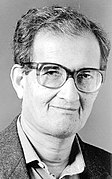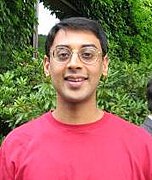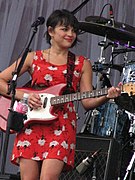Indians in the United States
|
|
|
| Total population | |
|---|---|
|
3,456,447 1% of the U.S. population (2016) |
|
| Regions with significant populations | |
| Languages | |
| Religion | |
| Related ethnic groups | |
|
|
|||
|
|||
Indian Americans or Indo-Americans are Americans whose ancestry belongs to any of the many ethnic groups of the Republic of India. Indian Americans comprise 3,456,447 alone and 4,121,994 including mixed race Indian Americans, representing around 1% of the U.S. population as of 2015. Indian Americans are the country's third-largest Asian group alone or in combination with other races after Chinese Americans and Filipino Americans, according to 2016 American Community Survey data. The U.S. Census Bureau uses the term Asian Indian to avoid confusion with the indigenous peoples of the Americas commonly referred to as American Indians (or Native Americans, or Amerindians).
In the Americas, historically, the term "Indian" has been most commonly used to refer to the indigenous people of the continents after European colonization in the 15th century. Qualifying terms such as "American Indian" and "East Indian" were and are commonly used to avoid ambiguity. The U.S. government has since coined the term "Native American" to refer to the indigenous peoples of the United States, but terms such as "American Indian" remain popular among both indigenous and non-indigenous populations. Since the 1980s, Indian Americans have been categorized as "Asian Indian" (within the broader subgroup of Asian American) by the United States Census Bureau.
While "East Indian" remains in use, the term "South Asian" is often chosen instead for academic and governmental purposes. Indian Americans are a subgroup of South Asian Americans, a group that also includes Bangladeshi Americans, Bhutanese Americans, Nepalese Americans, Pakistani Americans, Sri Lankan Americans, etc.
...
Wikipedia




